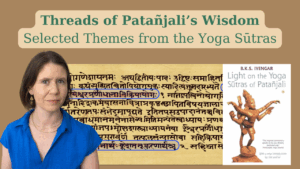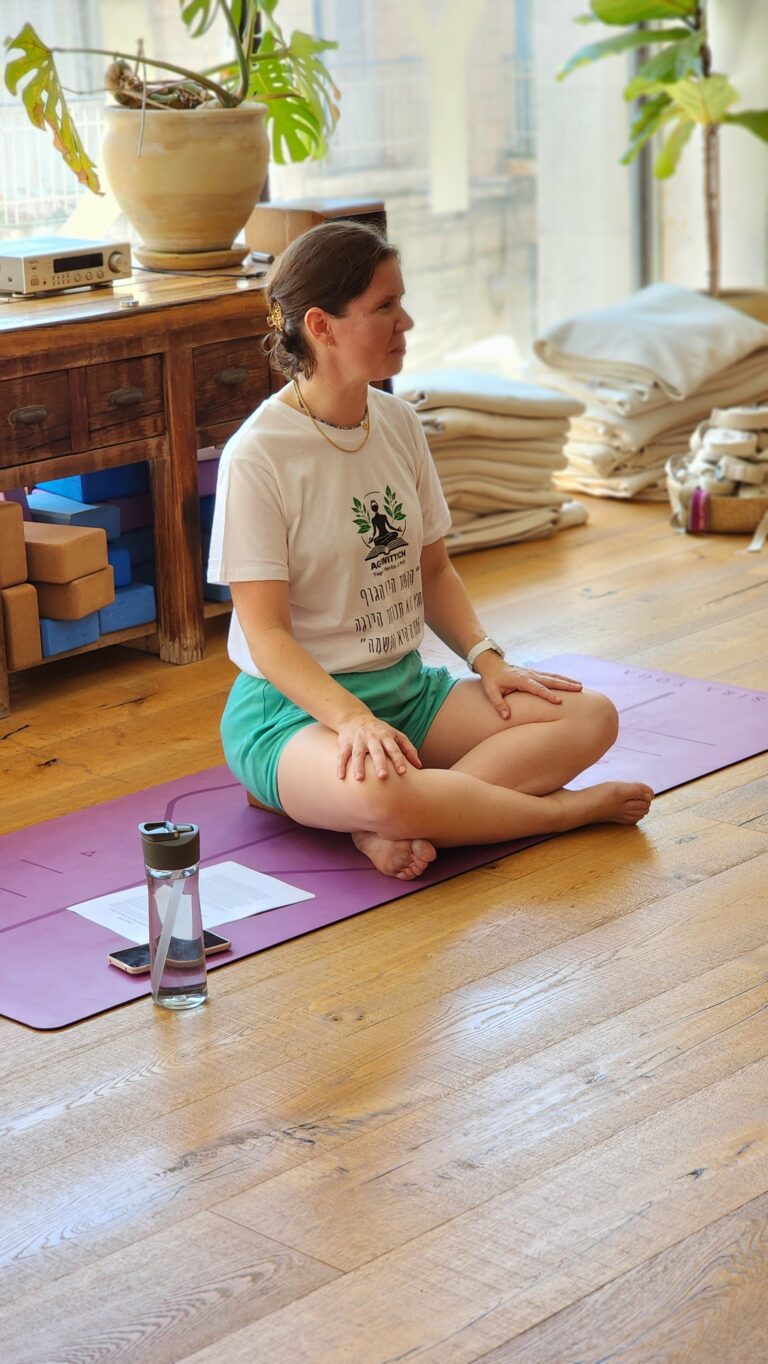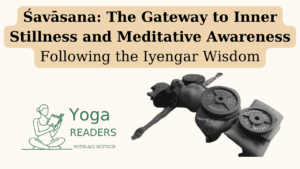
Threads of Patanjali’s Wisdom – Online Course
A course of selected themes from the Yoga Sutras with Dr. Agi Wittich The Yoga Sūtras of Patañjali are the philosophical heart of yoga.

Breath is our constant companion on life’s journey – from our first inhale at birth to our final exhale at death. In the practice of trauma-sensitive Iyengar yoga, this natural rhythm becomes a powerful tool for healing, presence, and transformation. Every moment of our existence is marked by the steady rhythm of breath. This fundamental life force, known as prana in yoga philosophy, does more than simply sustain us – it connects us to the very essence of being alive. In trauma-sensitive Iyengar yoga, we honor this connection by bringing conscious awareness to each breath, allowing it to guide us deeper into our practice and our healing journey.
In our fast-paced world, particularly for those carrying trauma, the mind often races between past experiences and future concerns. The breath offers a reliable anchor to the present moment. When we focus on the subtle sensations of breathing – the rise and fall of the chest, the gentle expansion of the ribcage, the cool air entering the nostrils – we naturally draw our attention away from racing thoughts and into the immediate experience of now.
This present-moment awareness becomes especially powerful in trauma-sensitive practice, where feeling safe in the current moment is crucial for healing. The breath provides a constant, reliable point of return when memories or anxieties arise.
Modern science has begun to validate what yoga practitioners have known for millennia: breath is a powerful regulator of our nervous system. The breath serves as a unique bridge between our automatic bodily functions and our conscious control. This connection makes it an invaluable tool for managing stress and trauma responses.
Research has demonstrated multiple physiological benefits of conscious breathing. First, reduced cortisol levels and stress response. Second, lowered blood pressure and heart rate. Third, increased heart rate variability, indicating better stress resilience. Then there is also enhanced activation of the parasympathetic nervous system, our body’s “rest and digest” mode, and improved immune system function.
In trauma-sensitive Iyengar yoga classes, breath awareness is introduced gradually and mindfully. We recognize that for some individuals, focusing on the breath might initially feel overwhelming or triggering. Teachers create a safe container for exploration, offering different entry points for connecting with the breath:
In Iyengar yoga, we pay careful attention to how breath supports and enhances physical postures. The integration of breath and movement creates a harmonious flow that can help release tension patterns held in the body. This synchronization of breath and movement also provides valuable feedback about our current state – revealing areas of holding or restriction that might need attention.
One of the most empowering aspects of breath work is that it provides practitioners with a portable tool for self-regulation. The skills developed on the mat – using breath to calm the nervous system, center attention, and return to the present moment – can be applied in any situation. This practical application makes breath work an invaluable resource for managing daily stress and trauma responses.
Building a relationship with the breath is not about forcing or controlling – it’s about developing awareness, sensitivity, and understanding. In trauma-sensitive Iyengar yoga, we encourage practitioners to approach breath work with curiosity and compassion, allowing their experience to unfold naturally. This gentle approach helps create a sustainable practice that can support long-term healing and growth.
As we deepen our understanding of breath in trauma-sensitive Iyengar yoga, we discover its profound capacity to support healing, regulate our nervous system, and bring us back to the present moment. This awareness becomes a precious gift – a constant companion that supports us both on and off the mat, helping us navigate life’s challenges with greater ease and resilience.
I realize that everyone’s journey with breath awareness is unique, and it’s essential to honor individual comfort levels and boundaries.

A course of selected themes from the Yoga Sutras with Dr. Agi Wittich The Yoga Sūtras of Patañjali are the philosophical heart of yoga.

In a recent Yoga Readers session, Dr. Lois Steinberg opened her teaching archives and personal memories, sharing stories that span four decades of study

In the vast and intricate repertoire of yoga āsanas (postures), Śavāsana (Corpse Pose) holds a unique and profoundly significant position. Often superficially perceived as
Agi Wittich is a yoga practitioner since two decades, and is a certified Iyengar Yoga teacher. Wittich studied Sanskrit and Tamil at the Hebrew University of Jerusalem, Israel, completing a PhD with a focus on Hinduism, Yoga, and Gender. She has published academic papers exploring topics such as Iyengar yoga and women, the effects of Western media on the image of yoga, and an analysis of the Thirumanthiram yoga text.